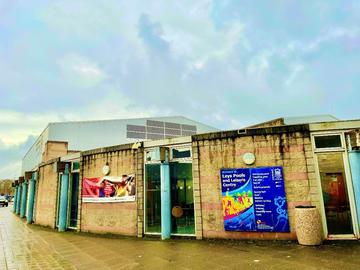Oxfordshire Health Humanities Project

Many know Oxfordshire as a thriving region of culture and heritage within beautiful surroundings. The county of Oxfordshire, for example, has health outcomes that are better than the national average: with male life expectancy of just over 80 years (compared with 79 nationally) and female life expectancy of 84 years (compared with 83 nationally).
Yet, as detailed analysis points out, specific wards or areas of Oxfordshire face significant challenges such as ‘Barriers to Housing and Services’ and ‘Income Deprivation’. The gap in life expectancy between some Oxfordshire wards, for example, is as wide as fifteen years. While wards contain a range of living conditions, statistics classify these ten Oxfordshire wards with areas falling within the 20% most deprived in England.
The Oxfordshire Health Humanities project works with Oxfordshire County Council Public Health and key Oxfordshire Voluntary, Community, and Social Enterprises to evaluate two community health programmes and provide insight into health inequalities in the ten priority wards of Oxfordshire. The priority wards are: Abingdon Caldecott, Banbury Cross and Neithrop, Banbury Grimsbury and Hightown, Banbury Ruscote, Barton & Sandhills, Blackbird Leys, Littlemore, Northfield Brook, Osney & St Thomas, and Rose Hill & Iffley. The two community health programmes are: Community Health Development Officers and Well Together.
Community Health Development Officers and Well Together aim to reduce health inequalities in the ten priority wards of Oxfordshire. Health inequalities are differences in health outcomes and access to healthcare. These can include differences in rates of illness, average life expectancy, or the availability of resources such as medical care, healthy and affordable food, or green space.
Health is not simply a biological and scientific concept, but is also deeply social and cultural. The food we eat, for example – including how such food is prepared as well as how much and when we eat – is shaped by family, religion, culture, and social habits as much as it is by health concerns. Likewise, cholesterol testing or diabetes screening programmes are useful only when such services are accessible and when people choose to access these services. Individuals consult friends and family and absorb social norms regarding who and what to trust, before deciding whether or when to access health services and modify lifestyle habits. As Healthwatch Oxfordshire’s 2021 report on community health and wellbeing recorded, only a small minority of Oxfordshire residents rely on formal medical health services for support. The majority instead turn to friends, families, and spiritual leaders for health and wellbeing guidance.
The Oxfordshire Health Humanities project provides a long-term and expansive approach to public and community health, using interdisciplinary humanities research. It examines social attitudes and cultural practices that shape community engagement with health and wellbeing. It also analyses how these were applied, transformed, or reaffirmed in the implementation of the Community Health Development Officers and Well Together programmes.
Download and read the two-page summary of the project’s phase one evaluation
Download and read the full report of the project’s phase one evaluation.

Community Public Health Workshop Mapping Exercise
This evaluation was a partnership between Oxfordshire County Council Public Health, the University of Oxford Medical Humanities Research Hub, and Oxfordshire Voluntary, Community, and Social Enterprises. Members of Oxfordshire Public Health, Healthwatch Oxfordshire, Community First Oxfordshire, and Oxfordshire Community and Voluntary Action provided advice and guidance. Research and evaluation were independently conducted by medical humanities researchers at the University of Oxford.

Principal Investigator
Dr Erica Charters is Professor of the Global History of Medicine at the University of Oxford, and Academic Lead of the Medical Humanities Research Hub. She is also PI on the interdisciplinary project ‘Global Health, Public Health, and Community Health’ at the University of Oxford.

Lead Project Post-Doctoral Researcher
Dr Yuxin Peng is a medical anthropologist researching community and mental health in England. Her current research focuses on combining ethnographic and historical methods to improve the effectiveness and experience of health evaluations.

Project Researcher
Dr Sally Frampton is a historian of modern medicine and healthcare, with extensive experience in interdisciplinary collaborations and public engagement in the medical humanities.

Research Associate
Dr Urvi Khaitan is an economic and social historian researching gender, work, and poverty.

Research Assistant
Dr Theeba Krishnamoorthy completed her interdisciplinary PhD in Public Health in 2023 at the Institute for Connected Communities, University of East London. Her research interests include the role of gender, ethnicity, and sexuality in public health. She is currently practising medicine in London.

Research Assistant
Julia Gustavsson is a DPhil Candidate in History at St Peter's College, University of Oxford. Her research interests include the role of gender, class, and race in access to scientific participation, medical and scientific ideas about childhood and age, and the eugenics movement. As a research assistant on the Oxfordshire Health Humanities project, she has assisted in surveying the historical background of previous health intervention projects, in Oxfordshire and the UK at large.

Research Assistant
Joe Foster is a DPhil Candidate in History at St. Catherine’s College, University of Oxford. His research interests include the history of water fluoridation, as well as historical anxieties about dental health and food. Joe assisted with data collection as part of the survey team for the Oxfordshire Health Humanities project.

Yuran Shi
Research Assistant
Yuran Shi is a DPhil candidate in Asian and Middle Eastern Studies at St Antony's College, University of Oxford. His research focuses on the lived experience of Chinese women married to Lebanese men living in Lebanon. He is interested in gender, representation and self-representation, and social integration and acceptance in migration and especially marriage migration.

Research Assistant
Utsa Bose is a DPhil Candidate in History at Somerville College, University of Oxford. His research interests include the history of epidemics, pandemics and endemic diseases in colonial South Asia.
As a research assistant on the Oxfordshire Health Humanities project, he has assisted in surveying and mapping the histories of health censuses and patient choices in the UK.

Megan Lee
Research Assistant
Megan is a candidate for the MSc in the History of Science, Medicine, and Technology, with a research focus on global and indigenous systems of medicine. The Oxfordshire Health Humanities project aligns with her previous work with grassroots health charities.


